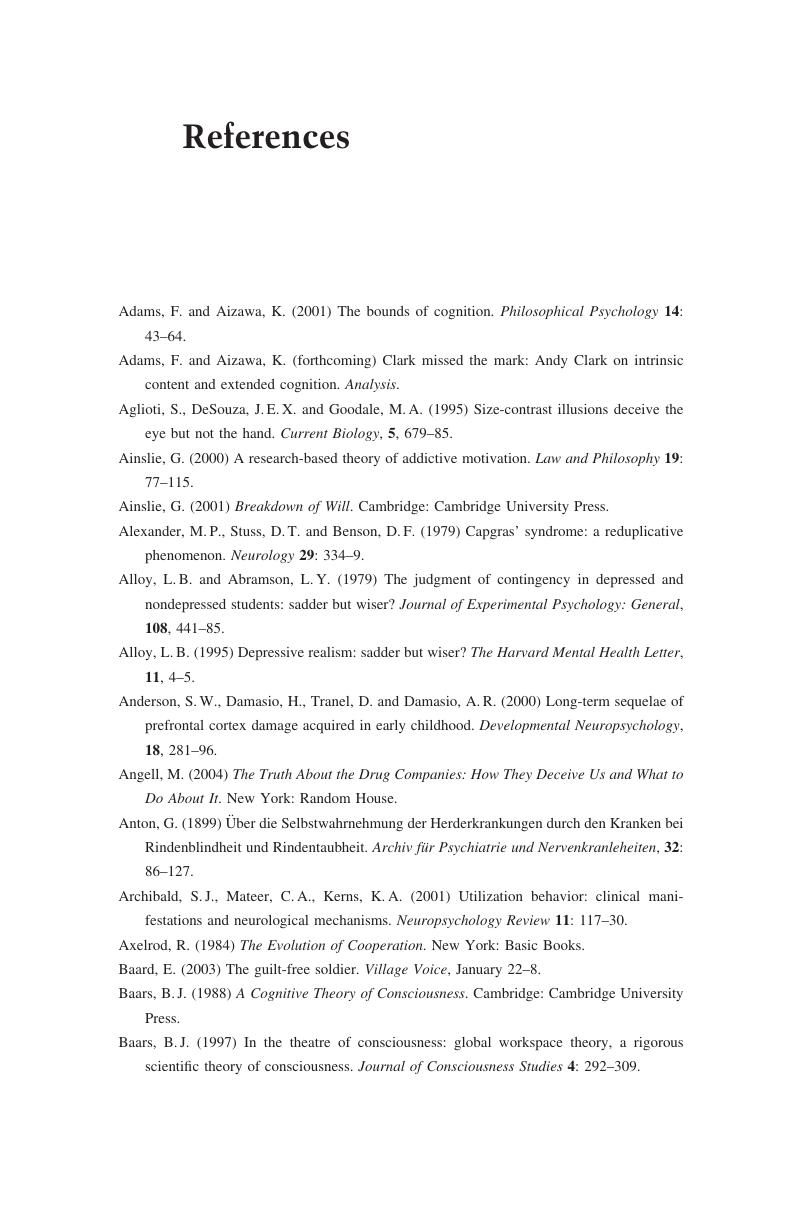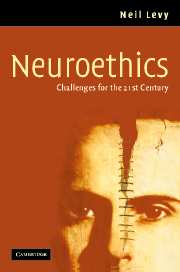Book contents
- Frontmatter
- Contents
- Preface
- Acknowledgements
- 1 Introduction
- 2 Changing our minds
- 3 The presumption against direct manipulation
- 4 Reading minds/controlling minds
- 5 The neuroethics of memory
- 6 The “self” of self-control
- 7 The neuroscience of free will
- 8 Self-deception: the normal and the pathological
- 9 The neuroscience of ethics
- References
- Index
- References
References
Published online by Cambridge University Press: 16 December 2010
- Frontmatter
- Contents
- Preface
- Acknowledgements
- 1 Introduction
- 2 Changing our minds
- 3 The presumption against direct manipulation
- 4 Reading minds/controlling minds
- 5 The neuroethics of memory
- 6 The “self” of self-control
- 7 The neuroscience of free will
- 8 Self-deception: the normal and the pathological
- 9 The neuroscience of ethics
- References
- Index
- References
Summary

- Type
- Chapter
- Information
- NeuroethicsChallenges for the 21st Century, pp. 317 - 336Publisher: Cambridge University PressPrint publication year: 2007



